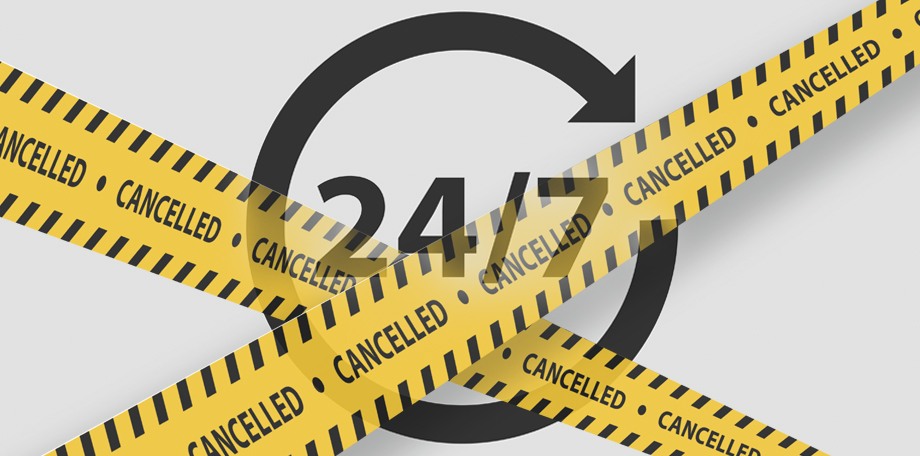People are being asked to do a lot more with a lot less these days. There are fewer workers doing the same amount of work or even more work than we experienced prior to the pandemic. I hear it from my coaching clients constantly – they are feeling beyond burned out.
For a long time, burnout was seen as an individual problem that you had to deal with by attempting self-care on your own time. But the pandemic has made it widespread. It’s no longer an employee problem but an organizational problem. And organizations can no longer afford to turn a blind eye to this issue.
The Data
The concept of burnout has been around since the 1970s but only in 2019 did the World Health Organization classify burnout as an “occupational phenomenon” calling it “a syndrome conceptualized as resulting from chronic workplace stress that has not been successfully managed.”
Here are some recent stats from a survey conducted by Harvard Business Review in which 67% of respondents worked at or above a supervisor level:
- 89% of respondents said their work life was getting worse.
- 85% said their well-being had declined.
- 56% said their job demands had increased.
Forty-two percent of U.S. women and 35% of U.S. men said they felt burned out often or almost always in 2021, according to a recent McKinsey & Co. report.
It’s true we are spending more time working and in meetings than we were pre-pandemic. A recent study by the National Bureau of Economic Research shows the amount of time employees spend in meetings has increased by 13%. In addition, the average workday is now 48 minutes longer. And we know that has negative effects because research from Gallup has shown that the risk of burnout increases when an employee’s workweek averages more than 50 hours, and goes up even higher when it reaches 60 hours.
The People
One of my executive coaching clients, Ann (not her real name), recently told me she is feeling more stressed than ever because of fewer resources. Her company needs to hire more people and although she’s been advocating for it, it hasn’t happened yet. Ann feels like she is being stretched in many different directions because of new responsibilities piled on her plate. She says she can’t concentrate or focus on any one thing because she is busy putting out fires in different areas. Ann tends to ruminate about work issues, which leads to poor sleep so it’s a vicious cycle.
Another client, Paul (not his real name), is in a similar situation. His company decided not to refill a position after the employee left and instead spread the tasks among the director-level executives. This is causing Paul to do mundane work that he feels is beneath him, so he’s not able to innovate and try new things, to do the work that engaged him in his position in the first place.
I recently talked with another client whose company brought in a consultant to help with burnout in his organization. Kevin (not his real name) himself was feeling beyond burnout so this was a welcomed decision. For a long time, he felt like he was pushing back against what the senior leaders wanted – to keep moving forward despite significant obstacles, to keep churning out the work. Now, he’s encouraged that the CEO is demonstrating that the company needs to work smarter, not harder. The support is coming from the top down, and the focus is now on assessing what is on everyone’s plate and how to ask for the resources they need.
Another Problem: Presenteeism
Presenteeism is another issue that companies are being forced to address in conjunction with burnout. It’s known as the act of working while unwell – physically, emotionally or mentally. Workers feel like they have to show up to work because they have so much work to do and the company culture insists that they should.
But there’s no doubt people are more productive when they are healthy and happy as opposed to working while unwell. So, workplaces will need to switch to the mindset of encouraging people to be productive and healthy.
Many companies are making an effort to increase happiness among workers by either closing down operations for a period of time (Bumble, LinkedIn and Hootsuite closed for a week to combat burnout) or ensuring employees are taking vacation days necessary for rest and recovery. Some are now offering unlimited vacation days, while others are forcing employees to unplug and let workers know that it’s okay, and expected, to step away from their jobs. This mandated relaxation time is being considered the new workplace perk.
Organizations who fail to make employee well-being a priority will face the risk of increased resignations, a significant reason for the recent “Great Resignation.”
Canceling the “Always On” Culture
It will be hard to do, but tackling presenteeism and burnout will require a shift from our “always on” culture in which work never really stops. Technology is partly to blame because we are so attached to it, but it can also help be a solution by putting systems in place so that we aren’t tied to it constantly.
Related: The Brain Burden of Constant Tech
The Hyperactive Hive Mind
I recently listened to the Innovation Hub Podcast with author Cal Newport. You may recognize Newport as the author of Deep Work which outlines a strategy for engaging your brain in what he calls “deep work.” His has a new book called A World Without Email which discusses how email wreaks havoc on our productivity.
That’s because when we are constantly checking email throughout the day, we are context shifting between email and actual work, which is basically a cognitive disaster. Switching back and forth between tasks slows down your performance on both. This back and forth of our brain’s functionality makes us feel anxious and fatigued from work. He says the email overload is now a crisis, not just an annoyance.
Newport says because we feel obligated to check email (or Slack) constantly throughout the day, we have created what he calls a “hyperactive hive mind.” This means we are having multiple back and forth digital conversations that are unscheduled and unstructured to solve business problems. This method of communication is ineffective, and remote work has only made the hyperactive hive mind stronger with hundreds of billions of dollars in productivity on the table. So, what’s the solution? Coincidentally, more technology, according to Newport.
Whether that be agile workflows or a ticketing system, businesses can use more automated systems to replace a lot of the back and forth conversations we have over email. For example, meetings should not be scheduled via email. You’ve seen this happen: a simple meeting scheduling email turns into multiple back and forth emails among the team because someone is not available on a certain day/time. Instead, use a free tool such as Calendy to get rid of email-based meeting scheduling. This is just a small step in reducing the inbox overload, which could in turn help us all manage that burnout.
How to Beat Burnout
There is no one cure to burnout, but a good place to start is by asking employees about it. What management perceives to be a problem may not actually be a pain point for employees. Likewise, there will be problems that exist right under bosses’ noses that they aren’t aware of.
Christina Maslach, a social psychologist who is the U.S.’ preeminent burnout expert, suggested to Time Magazine there are six key areas on which businesses should focus:
- creating manageable workloads
- giving employees control over their jobs, to the extent possible
- rewarding and acknowledging good work, either financially or verbally
- fostering community
- treating workers fairly and equitably
- helping workers find value in their work
I would add discussing mental health at work to that list. By checking in with your employees on how they are doing, creating an open dialogue about successes and struggles, while offering support to make their jobs easier, leaders can move forward in beating burnout.
Are you feeling beyond burned out? An executive coach can help you navigate the situation and solidify a burnout prevention strategy.



